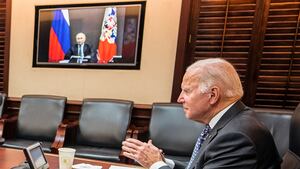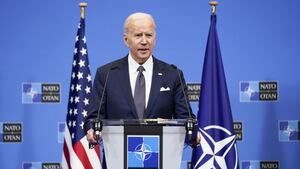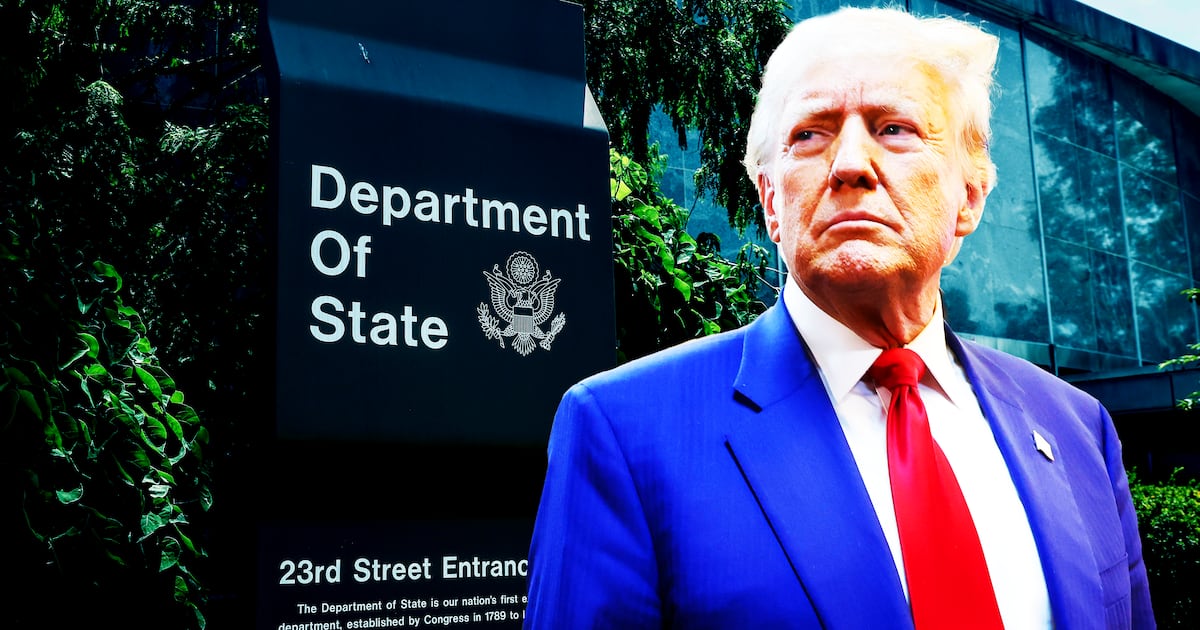For much of the past three quarters of a century, the U.S. intelligence community has had one job that was more important than all others: assessing the capabilities of the Russian military. In all that time, the most significant deployment of that military is what we have seen during the past month, as part of the invasion of Ukraine.
While U.S. intelligence has gotten a lot right associated with this war, like virtually every other country in the world, we have been surprised that Russia has been so strikingly unsuccessful in achieving its initial goals since the current operation began on Feb. 24.
Many (including those in Moscow, judging from the current logistical issues Russian forces are facing) expected Russia to achieve air and sea superiority hastily which, in turn, would give Russia a big advantage in pursuing its objectives on the ground.
Clearly, that has not happened. Over a month into the invasion Russia still has not achieved air superiority, most of its major ground offensives are stalled, and Russian troops have been pushed back in key locations, including around the outskirts of Kyiv. There is now talk that Russia will be narrowing its military goals.
This raises the question: If the intelligence community was so successful at predicting the invasion, as well as key Russian tactics, how did it get this core question that has been so central to its mission so wrong?
Or did it?
Sources familiar with senior levels of the Biden national security team suggest that it was not so much that Western intel was wrong about Russia’s capabilities, as it was that the response of Ukraine and the NATO alliance was so much more effective than expected. There is also a belief among some in the administration that the real problem was not Western intelligence being off but, rather, it was Russia that got it wrong—from underestimating the Ukrainian and Western responses to the invasion, to a Russian plan that is now regarded as profoundly ill-conceived.
General Mark Hertling, former commander of the U.S. Army in Europe observed, “Our intelligence failure was not so much in our read of Russian capabilities, but rather how terribly inept, incompetent and corrupt the Russian government and military has become...beyond any of our wildest dreams.” Hertling added that among those who did anticipate the poor performance of the Russians and the effectiveness of the Ukrainians were military professionals—who were attentive to issues like training, the treatment of conscripts, the quality of non-commissioned officers and other factors that loom large for those “who were well-versed in issues like training, exercises, operational art, tactics and leadership.”
Having said that, many experts believe that the faulty expectations of many in the West are based on what is considered an enduring major blind spot for intelligence organizations. They are just not very good at evaluating intangibles—whether they concern the will of the people of Ukraine (or the lack thereof among Russian fighters), Moscow’s hubris, or the level of incompetence of the military leaders of the fading superpower.
Former Supreme Allied Commander in Europe Admiral James Stavridis said, “It is relatively easy to measure the hard metrics of war—how far does a missile shoot, how fast is a jet, how hardened in the armor on a tank. It is far more difficult to measure what's in the human heart—the fighting spirit of the Ukrainians, the weak morale of the Russians, the deep level of corruption in the Russian arms industry.”
Stavridis added: “But the intelligence community needs to review its assessments going back a decade and more, in terms of Russian capabilities—with an eye toward measuring what's in the human heart as well as they assess the hard facts of weapons systems. It is a far more difficult task, but doing so successfully is critical to our national security.”
Intelligence community leaders agree with this assessment.
Former chairman of the National Intelligence Council Gregory Treverton described the importance of dealing with this challenge: “The things that matter most in actual battle are the intangibles: how good are their soldiers and, critically, how prepared are they to fight…In the case of both Iraq and Afghanistan, what looked like formidable forces we had trained just melted. They didn't fight. In Ukraine, it seems that many of the [Russian] conscripts had no idea why they were fighting, and maybe even where they were. We used to say during the Cold War that if war broke out on the central front we would learn a lot in the first hour about these intangibles. I think that's the main story here, but I have also thought for a long time that the Russian army—given the country's economy—had to be a lot thinner than it was usually assessed.”
Former Director of National Intelligence General James Clapper has given this matter a great deal of thought over “the past 50 plus years.”
“Neither intelligence nor the military has ever succeeded in assessing the intangible of ‘will to fight,’” argued Clapper. Clapper illustrated the point by observing that in Southeast Asia, “We profoundly underestimated the ‘will to fight’ of the Viet Cong/North Vietnamese, and conversely, profoundly over-estimated the ‘will to fight’ of the South Vietnamese” and that we made similar errors in Iraq and Afghanistan, underestimating the will to fight of enemies and overestimating that of allies.
In Ukraine, Clapper asserts, “We overestimated the ‘will to fight’ of the Russians, and under-estimated the ‘will to fight’ of the Ukrainians. Some of this arose from the decades-long reform of the Russian military (better equipment which we could count and measure), and the lackluster performance of the Ukrainians in 2014. But, those are secondary factors, not the real explanation. When the Russians actually embarked on a real-world large military operation, all their weaknesses became obvious—poor leadership, poor logistics, poor command and control, poor planning—all of which affect the will to fight of their individual soldiers and the units they are organized into.”
Clapper suggests that the same challenges exist when assessing what makes a motivated, effective fighting force. “If there is an ideology, a narrative that fighters genuinely believe in, they will fight—individually and as a group. What our historic clients and now the Russians have in common is the absence of a cause they understand and believe in.”
As a result, Clapper, like other experts with whom I spoke, believe it is “impossible to gauge in advance how a fighting force either at the individual soldier or unit level will perform in combat. There is an old saw in intelligence about the difference between secrets and mysteries. Secrets are knowable facts, which ultimately are collectable. Mysteries are abstractions that nobody knows. Too often, the IC (intelligence community) is expected to ‘know’ both with equal clarity. The IC is not clairvoyant. ‘Will to fight’ falls into the mystery category. What the IC should always do when asked to make such assessments is provide a judgment, subject to change when two fighting forces collide. Until then, take our assessment with a grain of salt. And, if we could have, we’d have figured this out a long time ago. I know; I’ve tried.”
In an excellent piece for the The Atlantic, Phillips Payson O’Brien of Scotland’s University of St. Andrew attempts to identify where so many analysts went wrong. He comes to a similar conclusion to many of the experts with whom I spoke, but makes the additional point that too great an emphasis on the quality of a military’s technology and equipment is also a trap. He wrote, “you must analyze not only its equipment and doctrine but also its ability to undertake complex operations, its unglamorous but crucial logistical needs and structure, and the commitment of its soldiers to fight and die in the specific war being waged.”
An unspoken but important aspect of this view is that both overestimation of the capabilities of an enemy and of the value of modern weapons systems serves the interests of the “military-industrial complex” about which President Dwight Eisenhower—the American president who best understood modern warfare—warned. Such views lead to bigger defense budgets when careful analysis of factors such as those cited above might have the opposite effect.
Naturally, until we are better able to assess all the factors relevant to assessing the capabilities of both our allies and enemies, the main conclusions we can draw are that we need a greater focus on both the mundane, like training and logistics, and on intangibles like the will to fight, competence and morale. We also need a great deal more humility.
As the famed military theorist Carl Von Clausewitz wrote in 1832 his book On War: "Many intelligence reports in war are contradictions, even more are false, and most are uncertain. What one can reasonably ask of an officer is that he should possess a standard of judgment, which he can gain only from knowledge of the actions of men and affairs, and from common sense."









